
Disc Replacement Operation
Most joints in the body have been affected by a variety of disease processes and have been treated by fusion in the early days of surgery and more recently by replacing the joint with an artificial one. Whilst the spinal discs are not joints in the technical sense, they do allow a degree of movement which, when all discs are taken together, confers a considerable degree of flexibility on the spine as a whole.
When a disc is damaged it may lead to pain or abnormal movement, both of which may need correction. If the discs degenerate, through the ageing processes, trauma or repeated stress, to the extent that they become increasingly painful, the person may become symptomatic. This is typically a central back pain, which may spread to the legs, or even into the abdomen.
Standard treatments for this type of pain include rest, during an acute exacerbation, with antiinflammatory medication, followed by physiotherapy. Blocks, such as epidurals may help. In most instances the pain will resolve adequately, but when these symptoms do not resolve after conservative treatment, the patient may feel that they are bad enough to warrant surgery.
Causes
Symptoms
Treatment
Causes
Disc replacement surgery is typically recommended for patients with a herniated or damaged disc that has not responded to non-surgical treatments such as physical therapy, medication, or injections.
Symptoms
The symptoms of a herniated or damaged disc can vary depending on the individual, but may include back pain, leg pain, numbness or tingling in the legs, weakness in the legs, and difficulty standing or walking.
Treatment
Non-surgical treatments such as physical therapy, medication, and injections are usually the first line of treatment for a herniated or damaged disc. However, if these treatments do not provide relief, disc replacement surgery may be recommended. During the procedure, a surgeon will remove the damaged disc and replace it with an artificial disc designed to mimic the function of a natural disc.
What is an Artificial Disc?
An artificial disc is a three-piece medical device consisting of a sliding core sandwiched between two coated metal endplates. The sliding core is made from a medical grade plastic (high molecular weight polyethylene) and the endplates are made from medical grade cobalt chromium alloy with a porous coating to promote anchorage, by the in-growth of bone into the pores. These materials usually do not harm the body and are used in many other medical implants such as total knee replacement implants.
What are the benefits of disc replacement surgery?
There are potential benefits of disc replacement surgery over spinal fusion surgery. Laboratory testing shows that artificial discs design allow your spine to move. In the clinical study, patients were observed to have motion between 0 and 21 degrees in flexion/extension (bending forwards and backwards). When a fusion surgery is performed, although your pain symptoms may go away, the vertebrae surrounding the disc space are immobilized. This may put more strain on the next disc, causing it to become damaged or even painful.
How is it done? / What happens during the surgery?
The operation is performed under a general anaesthetic, with you lying on your back. A horizontal incision is made, usually below the belly button and the muscles are gently pulled to either side, to allow access. It is unusual for the muscles to be cut at this stage, so recovery of function can be expected. The spine is approached through the retroperitoneal space, the peritoneum being the sac containing the bowel. Once in this space, the blood vessels are carefully moved away so that the spine can be seen and the damaged disc can now be removed.
The disc replacement is inserted after distraction of the disc space (spreading it to restore its normal height) and the wound is then closed. X-rays are used during the operation to make sure the artificial disc is in the right position.
More Spinal Conditions

Spine Tumor Surgery in Karachi: Leading the Way with Prof. Dr. Akbar Ali Khan, Best Neurosurgeon in Pakistan

Advancing Spinal Health: Understanding Vertebrectomy with Prof. Dr. Akbar Ali Khan
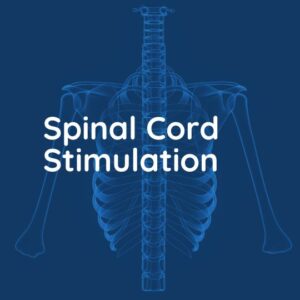
Spinal Cord Stimulation

Kyphoplasty and Vertebroplasty
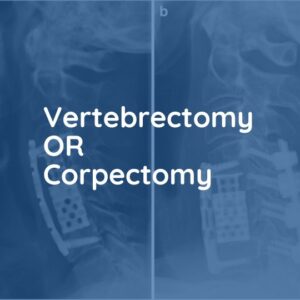
Vertebrectomy/Corpectomy

Foraminotomy
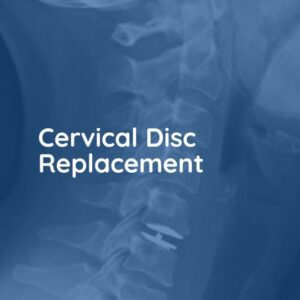
Cervical Disc Replacement

Anterior Cervical Discectomy and Fusion

Correction of Scoliosis

Thoracic Discectomy
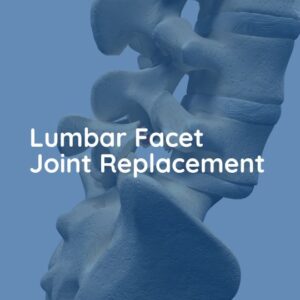
Lumbar Facet Joint Replacement
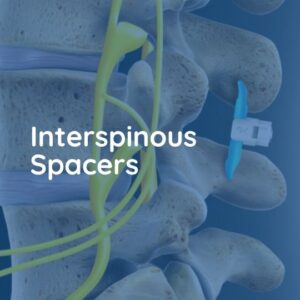
Interspinous Spacers

Endoscopic Lumbar Discectomy

Laminectomy
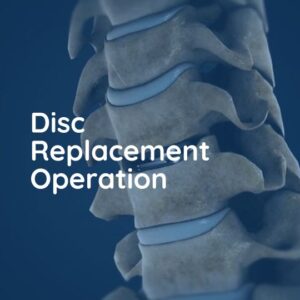
Disc Replacement Operation

Posterior Lumbar Fusion


